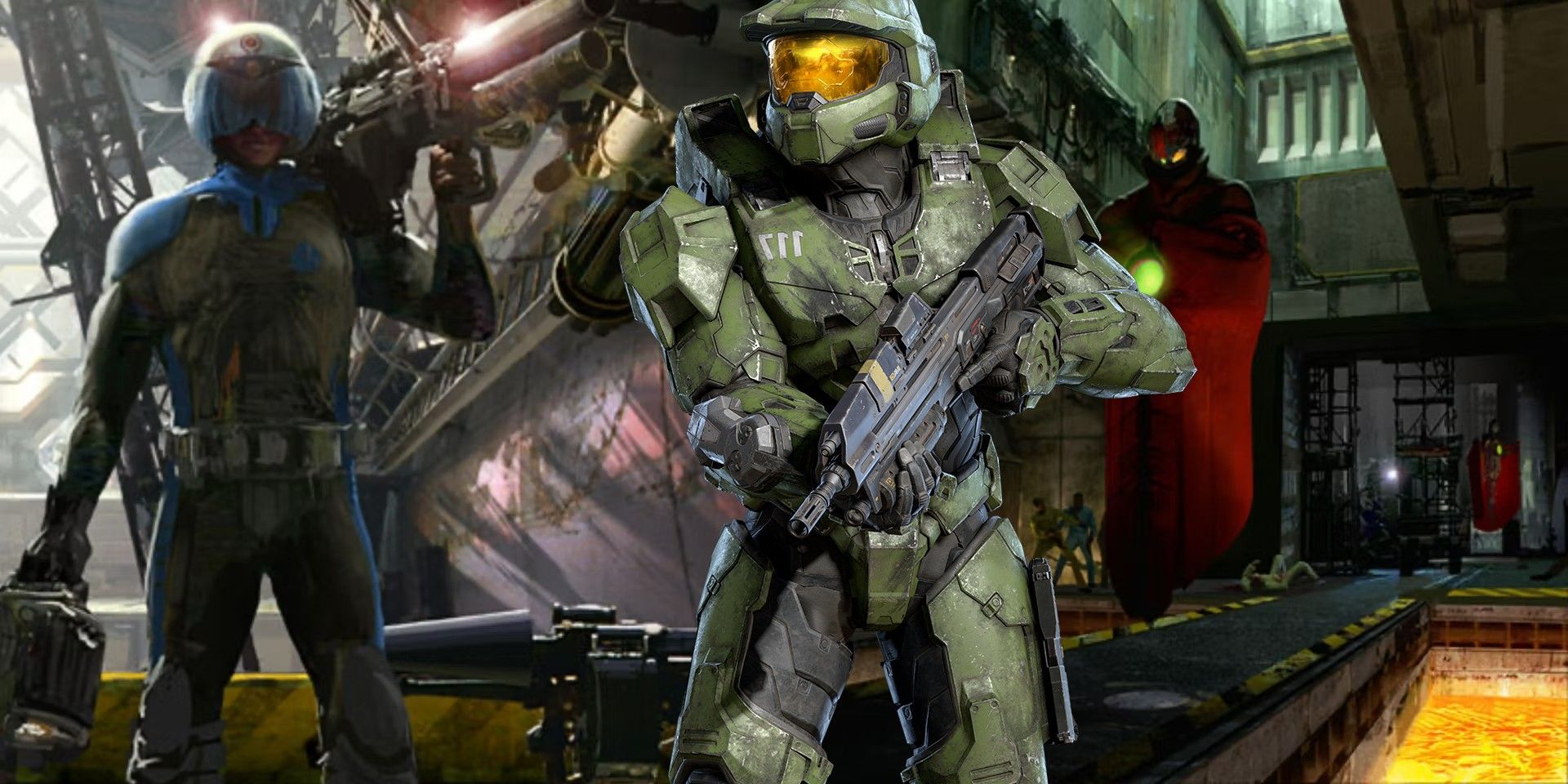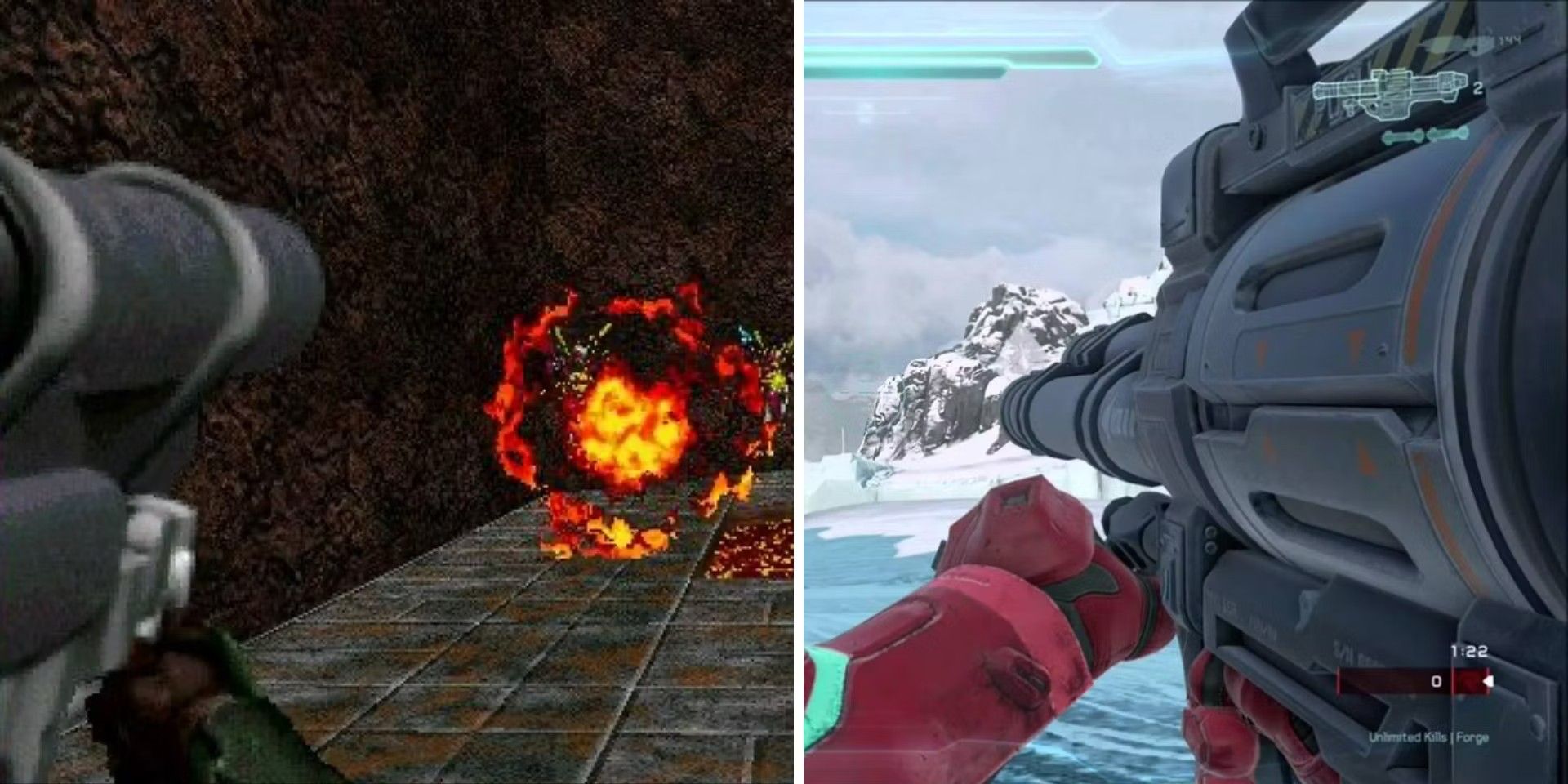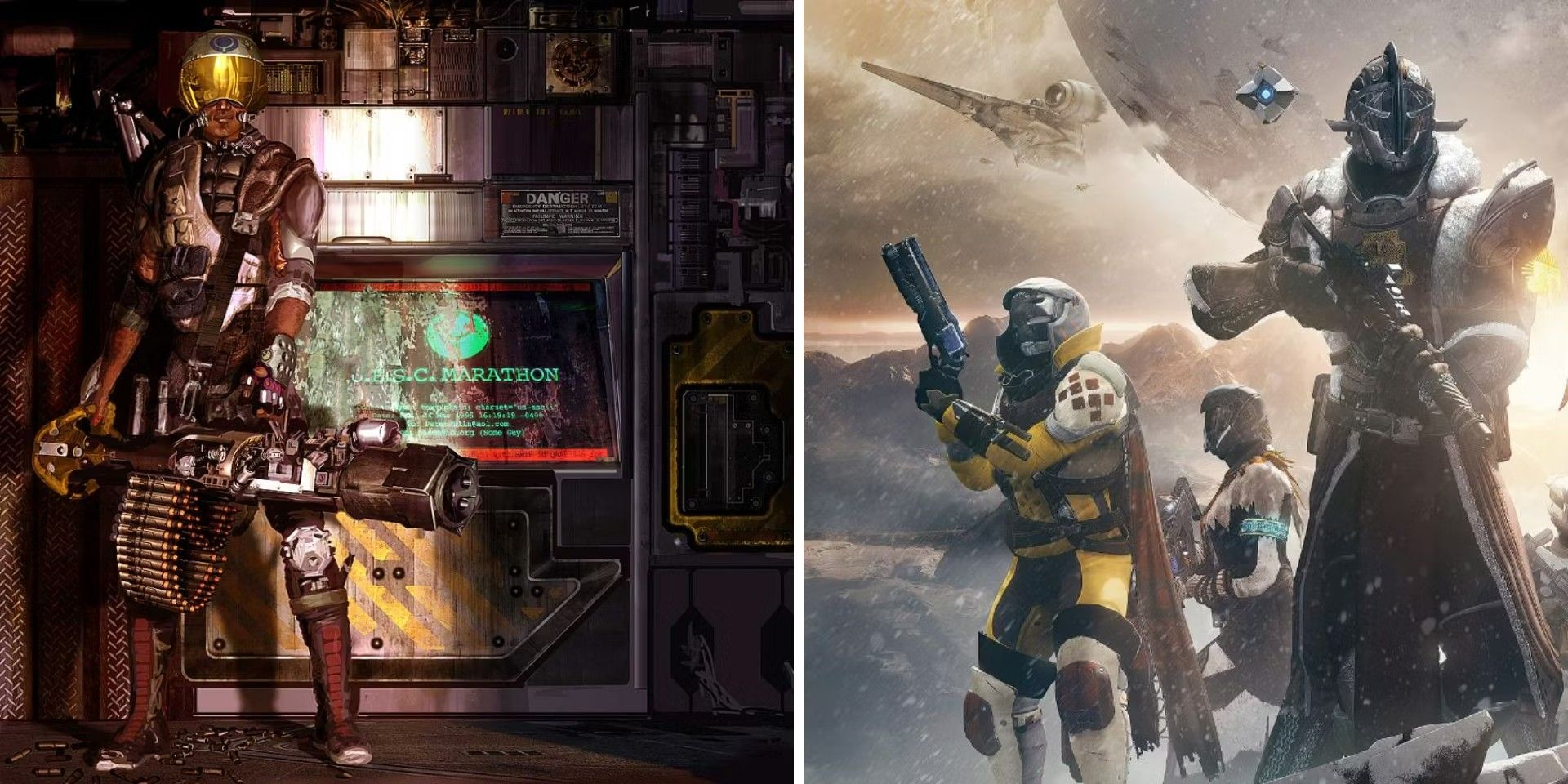The original Halo Trilogy published by Bungie Inc. set new standards for console-based FPS gameplay, while the company's Destiny games laid the groundwork for Warframe, Anthem, and other massive multiplayer shooters with science fantasy themes. Neither the Halo nor Destiny franchises would exist in their current form without Bungie’s first flagship franchise: the Marathon series, a 2.5D FPS trilogy published in the 1990s contemporaneously with the original Doom games. The colorful sci-fi aesthetics of the Marathon games greatly influenced the Master Chief protagonist and aliens of Halo, while the surreal, metafictional narrative of Marathon sowed the seeds of Destiny 1 and 2’s philosophical storytelling and mind-bending metaphysics.
After being acquired by Microsoft, game developers at Bungie helped propel the nascent Xbox console to worldwide success with Halo: Combat Evolved, an epic military sci-fi shooter that revolutionized console FPS design with features such as regenerating health, fine-tuned thumb-stick controls, and vehicular combat. After parting ways with Microsoft, Bungie tried its hand at the MMO market with Destiny, a multiplayer shooter game with a fairy tale-sequel science fantasy aesthetic about immortal Guardians fighting to bring humanity back from the brink. Before either of these games, Bungie had built a reputation in the 1990s as one of the premiere game developers for Macintosh computers, publishing creative titles such as the survival RPG Pathways Into Darkness, the Myth duology of real-time tactical fantasy games, and the 1990s Doom-style first-person shooters of the Marathon trilogy.
Bungie’s first Marathon game, published in 1994, mostly took place aboard the claustrophobic halls and external hull walkways of a slower-than-light colony ship orbiting Tau Ceti, the security officer PC fending off the shock troopers of a slave-taking alien empire and the schemes of onboard AIs inflicted by a synthetic megalomania called Rampancy. In the sequel Marathon 2: Durandal, the player character is kidnapped by one of the colony ship’s half-insane AIs and dragged across the galaxy on a quest to liberate an alien species from their cybernetic shackles. In Marathon: Infinity, the final game of the series, the plot becomes truly apocalyptic and mind-bending, acquiring literary depths developers at the Bungie game studio would continue to draw inspiration from when designing the gameplay and story reveals of Destiny and the earlier Halo franchise.
The Marathon Trilogy Inspired Halo’s Alien Enemies & Combat Cyborgs
Unlike the Master Chief of the Halo: Combat Evolved, it’s unclear whether the Security Officer protagonist of the Marathon trilogy is one of the Mjolnir Mark IV Battle Cyborgs alluded to in text from certain in-game computer terminals. Within the Marathon games at least, the player’s PC is capable of punching armored alien troopers to death, surviving falls from heights that would kill normal humans, and like the Master Chief, is protected by a suit-projected force field. Staple weapons of the Halo games - dual-wielded pistols, double-barreled rocket launchers, energy pistols that shoot charged bolts of plasma - appeared first in the Marathon games. Intriguingly, the Covenant enemies of Halo, a conquering empire composed of different alien beings, seem to have been inspired by the multi-species enemy forces of the Pfhor Empire from Marathon. Both games even have a plot twist where an alien species defects from their empire to fight alongside humanity.
The Marathon Trilogy Inspired Destiny’s Surreal World-Building & Metaphysics
On the surface, the storyline of Bungie’s Destiny games seems to be a classic tale of good vs. evil, with Guardians wielding light-themed powers fighting to protect humanity against a set of alien and cosmic threats collectively known as the Darkness. Players who dig deeper into the story by investigating Destiny's various lore books, however, will discover a much more complicated, philosophically intricate setting with hive insects who worship the logic of swords, god-emperors who defy death with decadence, and “paracasual” reality-warping phenomena.
These more surreal parts of Destiny’s backstory owe a lot to the narrative of the Marathon games, delivered to players through text in computer terminals. Between mission objectives and taunts from unstable AIs (who have the megalomania of SHODAN, the sarcasm of GLaDOS, and are sometimes named after mythical swords like Cortana from Halo), players can discover garbled computer code, stream-of-consciousness poetry, and musings about heroism, fate, and the end of the universe itself.



